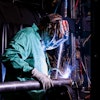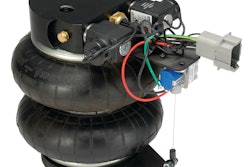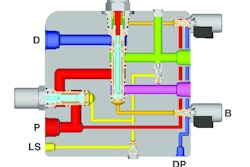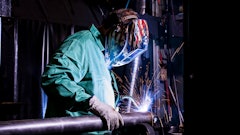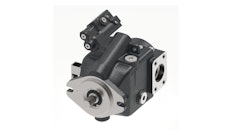
How can fluid power play a larger role in helping to make applications more energy efficient?
Fluid power is and will continue to be a foundational technology that has a significant role to play in our nation’s energy efficient future. Hydraulics and pneumatics are used on so many different platforms—aerospace, mobile equipment, industrial applications—but there are few forums for this broad base of customers to come together and learn from each other. In my mind, future demands for efficiency and innovation will demand a collaborative approach integrating the supply chain (i.e., suppliers, fluid power component manufacturers, distributors, system integrators and machine builders) working together to provide the right solutions to the marketplace. Fluid power—a technology they all share—can be one of the unifying themes that connects them. In the next couple of years we are sure to see a greater synergy emerge, as well as fuller integration with the customers themselves—the OEMs and end-users that buy, use and rely on fluid power technology.
What impact can fluid power have on energy consumption?
The fluid power industry has a high economic and energetic impact relative to the technology development cost. A couple of years ago the National Fluid Power Association (NFPA) worked with the Department of Energy (DOE) to conduct and publish a study that for the first time estimated the amount of energy consumed by fluid power systems in the United States across all these different applications: mobile, industrial and aerospace.
The net results were that 2-3% of all of the energy consumed in the United States is flowing through a fluid power system of one kind or another. Single digits, yes, but even 3% of a gigantic number is extremely large, and there are significant efficiency gains across that large platform that can be reaped through correspondingly small investments in best practice design and maintenance techniques and in new research and development. A copy of the report can be downloaded at www.osti.gov/bridge/purl.cover.jsp?purl=/1061537/.
What are new breakthroughs changing the fluid power landscape?
A real renaissance is going on in fluid power research and development in the United States. Fluid Power has always been a steady and reliable technology, but only recently, through industry/academic coalitions like the Center for Compact and Efficient Fluid Power (CCEFP), have we begun to see a new envelope of possibilities emerge. NFPA’s Technology Roadmap identifies some of the key areas, but the CCEFP and its more than 50 industry partners are really driving theory into practice.
Some of their recent successes have been new energy efficient digital hydraulic concepts, innovative energy storage devices necessary for hybridization, and novel high efficiency powertrains for both on- and off-highway vehicles. In the future, this work will not just increase fluid power’s market share in existing applications, it will open up entirely new markets for hydraulics and pneumatics.
What standards/regulations are affecting fluid power?
One area that is just starting to get attention is finding a standardized way to measure energy consumption in fluid power systems.
It is a critically important area to focus on. Without such a standard, demonstrating energy efficiency improvements in the marketplace as a result of new component designs, new system architectures or other technical advancements is a very subjective proposition.
ISO Technical Committee 131, the international body responsible for fluid power standards, is initiating a discussion on how to tackle this problem in hydraulic and pneumatic systems. I was able to participate on its inaugural teleconference on the subject, and will be part of the expanded discussion as it moves forward. There will even be a meeting of interested parties at the upcoming Fluid Power Systems Conference this November.
What critical issues are members facing?
Building an educated workforce for the future remains a central challenge—and progress is being made. In the last seven years the CCEFP has graduated more than 200 Bachelor, Masters and PhD engineers, all better versed in fluid power and its capabilities than any recent generation of students. More than 60% of those graduates are now working in the fluid power industry, and they represent a vanguard of a new workforce for our industry.
It is also important to reach out to technical colleges to ensure a supply of fluid power technicians. It is critical that NFPA help keep up this momentum by bringing more fluid power to more students at multiple points along the educational pathway.
We have a portfolio of programs that are designed to do exactly that, and are looking for help through the NFPA Education and Technology Foundation to scale them up in order to meet this critical challenge.
